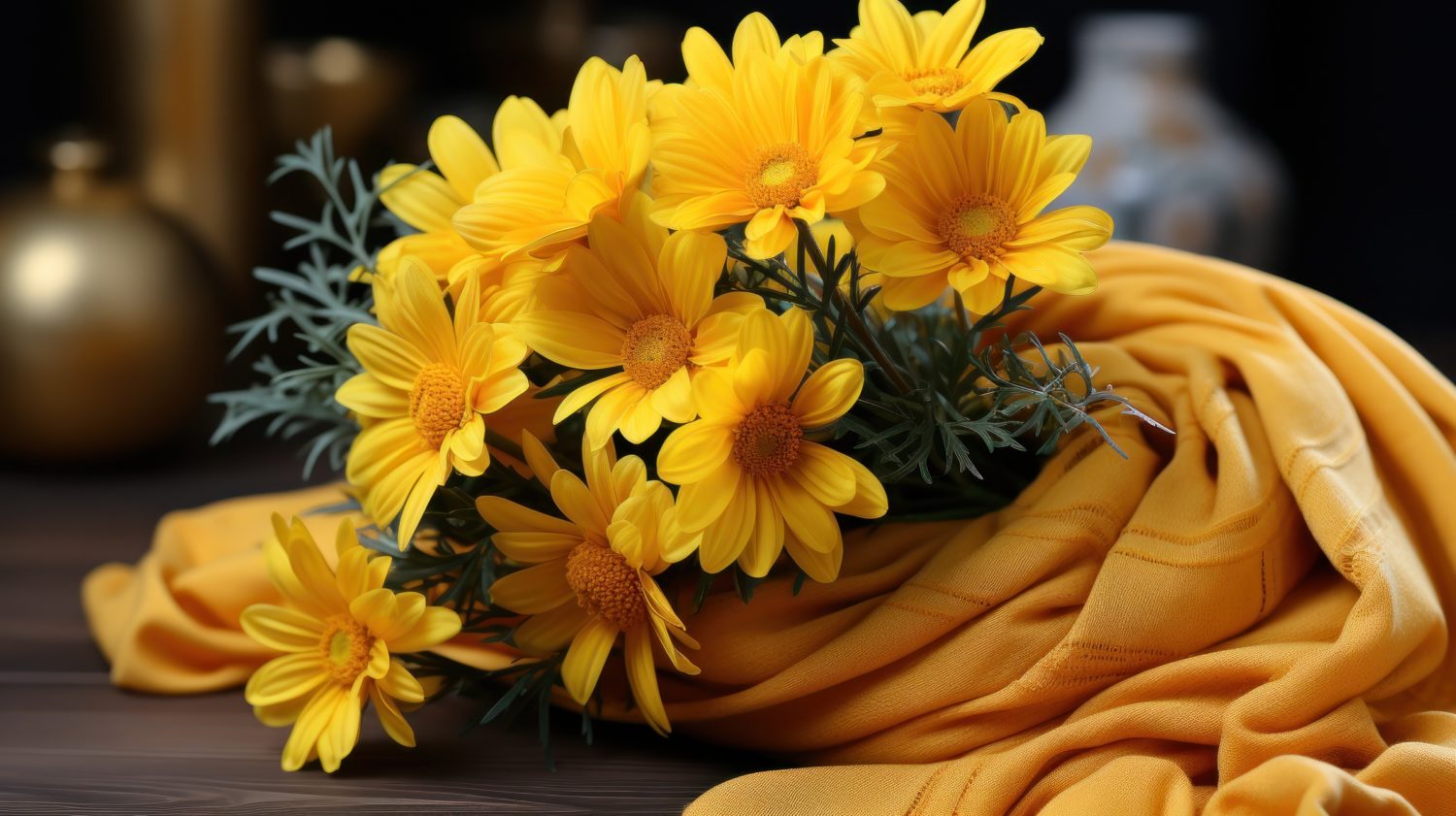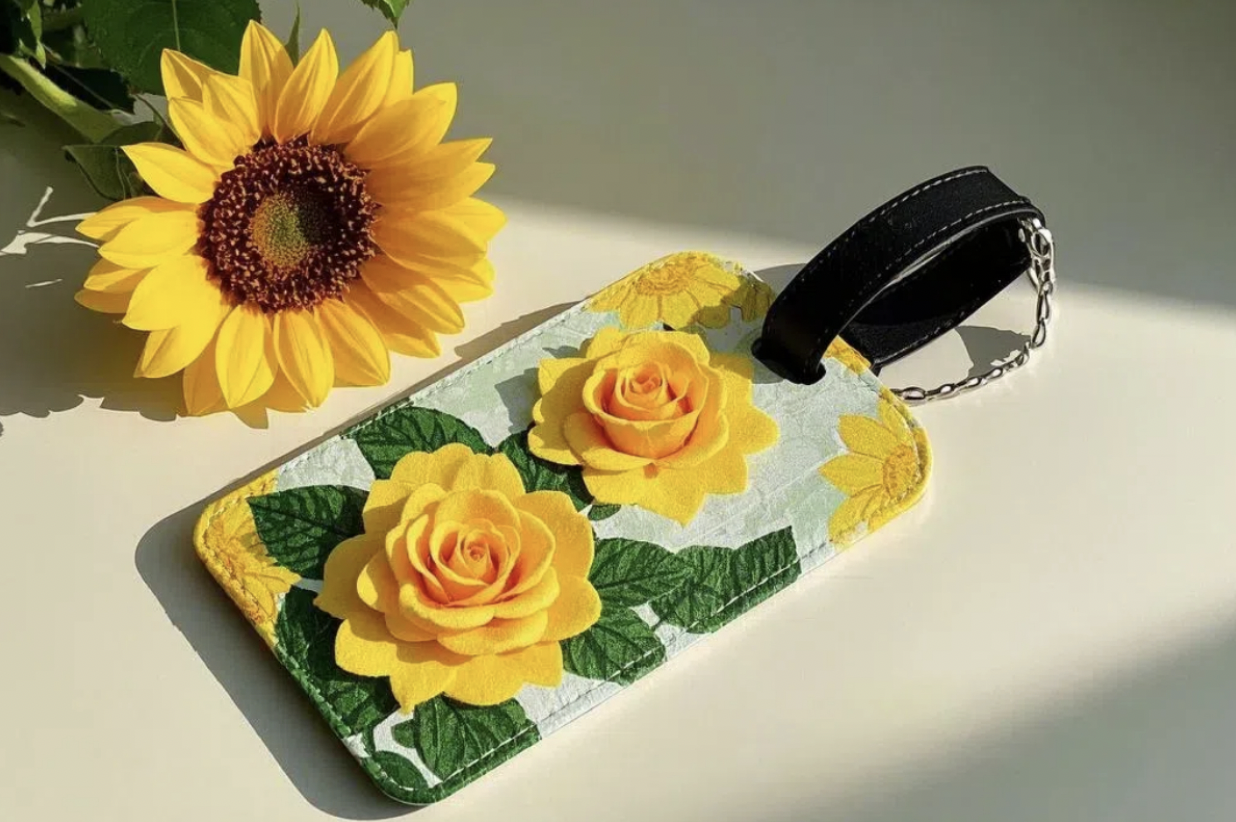
Like a sunbeam peeking through stormy clouds, yellow flowers carry a message of hope and joy. This guide unravels the fascinating symbolism behind these bright blooms.
You’ll discover the historical significance of yellow flowers and their meanings in different cultures.
You’ll also delve into the language of yellow roses and the depiction of yellow flowers in art and literature.
By the end, you’ll have a deeper understanding of this enigmatic language and you’ll never look at a yellow flower the same way again.
So, get ready to explore the vibrant world of yellow flowers, their meaning, and symbolism.
Historical Significance of Yellow Flowers
Throughout history, you’ve likely noticed yellow flowers being used in various cultures, but you mightn’t be aware of their deep-seated symbolic significance. They’re not merely visually appealing, but they’ve held profound symbolic meanings across different periods and societies.
In ancient Egypt, yellow was associated with gold, considered the color of eternal and indestructible entities. Yellow flowers, therefore, symbolized immortality and the divine. In contrast, during the Middle Ages in Europe, yellow was often associated with duplicity and betrayal, possibly due to its link with gold and greed.
In Asia, particularly China, yellow is revered as the most beautiful color, representing wisdom, harmony, and balance. Yellow flowers, such as chrysanthemums and marigolds, are integral to various festivals and ceremonies as they embody good luck and prosperity.
Scientifically, yellow flowers’ vibrant color is due to pigments called carotenoids. These pigments absorb blue light and reflect yellow, creating their bright hue. This adaptation increases their visibility to pollinators, enhancing their reproductive success.
Understanding these historical and scientific contexts enriches our perception of yellow flowers. With this background, let’s delve into the meanings of specific yellow flowers in the next section.
Common Yellow Flowers and Their Meanings
Now, let’s explore five common yellow flowers and uncover the unique symbolism each one holds.
- Sunflowers: These radiant blooms symbolize adoration, loyalty, and longevity. Sunflowers are known for their ability to follow the sun throughout the day, a phenomenon called heliotropism, which symbolizes unwavering faith and profound dedication.
- Daffodils: With their bright yellow trumpets, daffodils are often associated with rebirth and new beginnings. They’re one of the first flowers to bloom in spring, making them a symbol of renewal.
- Marigolds: Marigolds, in their vibrant yellow-orange hues, embody the sun’s warmth. They’re traditionally used in celebrations of life and death, symbolizing the beauty and brevity of existence.
- Yellow Roses: Unlike their red counterparts, yellow roses express friendship and joy. They’re a popular choice for celebrating happy occasions, symbolizing warmth, happiness, and platonic love.
- Tulips: Yellow tulips were once associated with hopeless love, but today, they signify cheerful thoughts and sunshine.
As you can see, the language of yellow flowers is as diverse as the blooms themselves. Each one bears a unique message, offering a fascinating glimpse into the intricate world of floral symbolism.
In most cultures, yellow flowers are often associated with positive elements such as warmth and vitality, symbolizing hope and a good life, and are sometimes seen as a symbol of good luck.
For this reason, incorporating yellow flower elements into daily life has become a way to convey positive energy and good wishes. For example, you can design luggage tags with a yellow flower theme. You can design your favorite elements on the custom luggage tags, and print your name, and contact information.
It not only highlights personal taste and style but also carries people’s good wishes for a safe, smooth journey and continuous good luck.

Cultural Interpretations of Yellow Blooms
While you’ve now uncovered the individual meanings of several yellow blooms, it’s also vital to understand how different cultures interpret these vibrant flowers. In Western cultures, yellow flowers typically symbolize friendship and joy. They’re often given as a warm gesture of appreciation or to celebrate happy events. However, in other cultures, the symbolism can be starkly different.
For instance, in Russia, yellow flowers have a negative connotation, often associated with deceit or farewell. Similarly, in Chinese culture, yellow carries a sacred and imperial connotation, reserved for rituals and royalty. In contrast, Japanese culture sees yellow blooms as a symbol of courage and nobility.
It’s intriguing to note how the power of colors, or even a single shade, can convey a spectrum of meanings, each shaped by unique cultural contexts. This diversity in interpretation underscores the complexity and depth of floral symbolism. It’s not just about the type of flower or its color; the cultural backdrop plays an equally crucial role in deciphering the language of flowers.
The Language of Yellow Roses
Diving into the specifics, let’s unravel the symbolism behind yellow roses, a flower that’s as complex in meaning as it’s vibrant in hue. From a scientific and analytical standpoint, the yellow rose carries a rich diversity of connotations across cultures.
- Friendship: In Western contexts, you’ll find yellow flowers meaning often symbolize friendship. They’re given as a sign of platonic love, camaraderie, and appreciation.
- Joy and Positivity: Their bright color naturally evokes feelings of joy and positivity. In the language of flowers, they represent warmth, delight, and happiness.
- New Beginnings: Yellow roses can also signify fresh starts and new beginnings, making them a popular choice for occasions like housewarmings or baby showers.
- Infidelity and Jealousy: However, in certain cultures, yellow roses have a more negative connotation, expressing feelings of jealousy or infidelity.
While yellow roses can be seen as symbols of friendship and joy, they can also reflect jealousy and infidelity. The interpretation varies widely based on cultural context. This vivid complexity makes the yellow rose a fascinating subject in the next section: yellow flowers in art and literature.
Yellow Flowers in Art and Literature
In the realm of art and literature, you’ll find that yellow flowers hold a profound significance, often symbolizing complex emotions and themes. They’re not just aesthetic elements; they convey deep-seated meanings and metaphors that enhance the narrative’s depth.
Consider Vincent Van Gogh’s ‘Sunflowers’. You’ll observe that Van Gogh employed yellow flowers to represent light, happiness, and his aspiration for brotherhood. However, they also symbolize the transience of life, as sunflowers wilt quickly.
In literature, F. Scott Fitzgerald in ‘The Great Gatsby’ used yellow flowers to signify decay hidden beneath apparent beauty and wealth. Gatsby’s lavish parties filled with golden blooms were a facade for his internal emptiness and disillusionment.
Scientifically, yellow is the most visible color, which may explain its frequent use in art and literature. Its high visibility makes it an excellent tool for drawing attention to specific elements or themes.
Analyzing the symbolism of yellow flowers in art and literature, you’ll find a duality; they can represent both positive emotions like joy and friendship, and negative sentiments such as deceit, jealousy, or even death. This dual capacity adds a layer of complexity to their meaning, making them a versatile symbol in creative works.
Conclusion
So, you see, the language of yellow flowers isn’t as enigmatic as you might think. They’re like the sun, infusing our world with joy and warmth.
Studies show that yellow blooms can even stimulate mental activity! The next time you encounter a marigold or a sunflower, remember, they’re not just pretty faces. They’re symbols of friendship, happiness, and intellectual prowess.
Truly, these golden blossoms are nature’s way of whispering positive messages.







